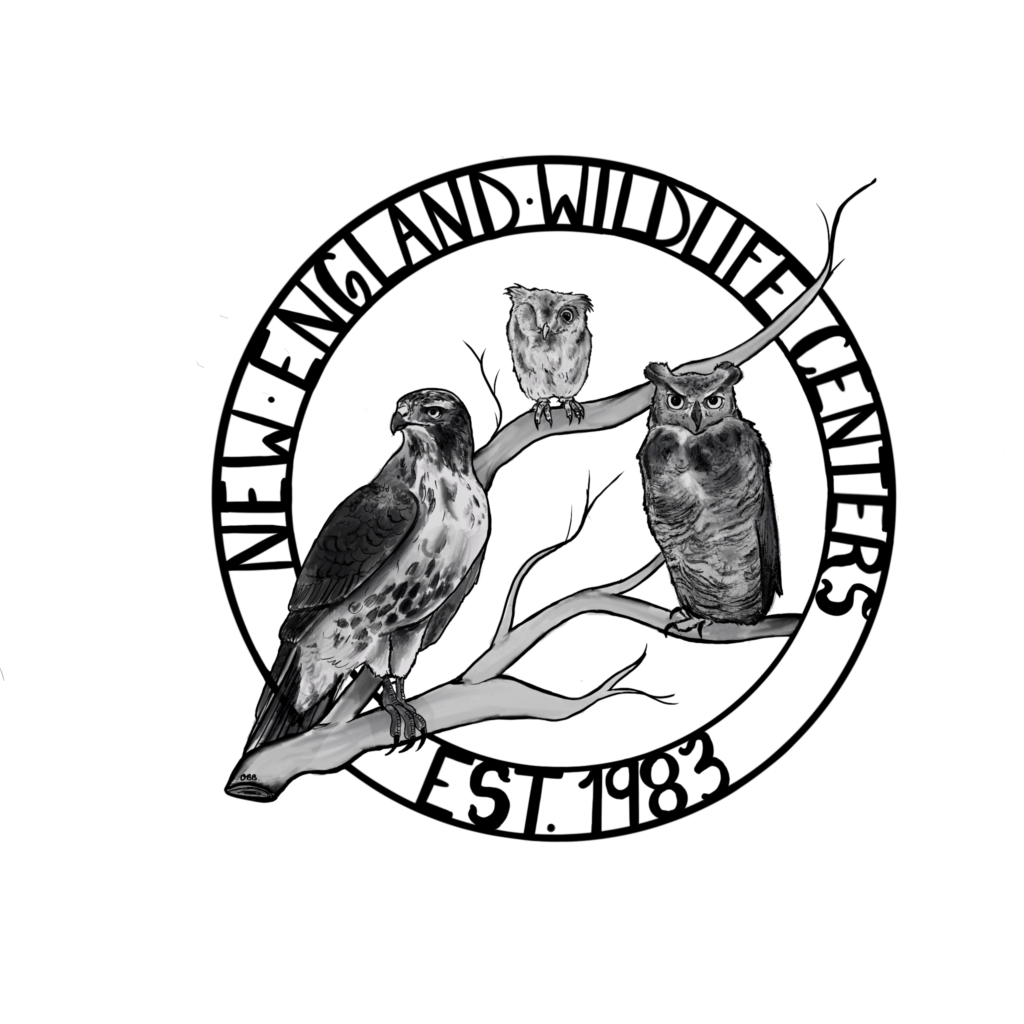This Belted Kingfisher was admitted into New England Wildlife Center’s hospital around 2 weeks ago. This female is part of the only common species of Kingfisher to live in the Northern United States. Kingfishers live around bodies of water, and normally set up a “watch post” on branches near the surface of the water. Once they spot their next meal they quickly dive head first into the water, feeding predominantly on fish, small crustaceans, amphibians, and small reptiles. Kingfishers also exhibit an interesting sexual dimorphism in which the females are much more colorful than the males. Sexual dimorphism relates to the features of an animal, such as height, color, markings, behavioral differences, etc that differ between the males and females of a species. Males and females tout a flat blue head, large white collar, white underparts and a blue band around its chest. Females also boast an extra reddish brown band that crosses their chest.
The Kingfisher was found not moving and unable to fly in a parking lot by a passerby in Charlestown. Animal Rescue League responded and transported the bird into the Center’s care. Preliminary exams indicated potential blunt force trauma, head trauma, coracoid fractures, toxin exposures and musculoskeletal injuries. Quite a list of complications. Secondary diagnostics, including bloodwork and Radiographs confirmed head trauma and ruled out fractures and toxin exposure. We have placed the Kingfisher on a round of pain relievers and anti inflammation medication. She has also been placed on a Pescavore diet. Within the next few days we plan to confirm her ability to fly and hunt live prey. If she passes she will be released within the week, if not we will continue to rehabilitate, and hope to have her in good health within the next few weeks.



